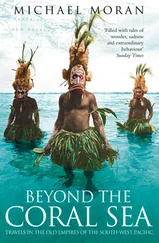The evening before, Wilkes had read an account of the sinking of a Nantucket whaleship called the Essex (not to be confused with the naval frigate by that name) by an enraged sperm whale. When the captain of the Two Brothers introduced himself as George Pollard, Wilkes realized that he was speaking to the very man he’d been reading about – the former captain of the Essex .
Pollard proceeded to tell the midshipman a story of unbelievable hardship, of how the crew took to their three small whaleboats and, fearful of cannibals on the islands to the west, began to sail against the trade winds for South America, almost three thousand miles away. All three boats would become separated from one another, and as the men began to die of starvation, the survivors realized that they had no alternative but to enact their own worst fears: they must eat the bodies of their dead shipmates. Pollard and a young Nantucketer were eventually rescued almost within sight of the coast of Chile after ninety-four days at sea. “I had by accident become acquainted with a hero,” Wilkes wrote, “who did not even consider that he had overcome obstacles which would have crushed 99 out of a hundred.”
As it would turn out, several months after his conversation with Wilkes, Captain Pollard once again encountered disaster. At night in a storm to the southwest of the Hawaiian Islands, the Two Brothers fetched up on an uncharted shoal. As the ship was being pounded to pieces on the coral, the order was given to take to the whaleboats. Pollard had to be dragged from the deck. The next morning all hands were saved by the whaleship Martha and taken to Oahu. Upon returning to Nantucket, Pollard lived out the rest of his life as the town’s night-watchman.
What happened to Pollard on his final voyage was a frighteningly common occurrence in the Pacific, an ocean so huge that much of it was not yet adequately surveyed and charted. In addition to unmarked shoals that might crop up almost anywhere, there were hundreds of little-known islands surrounded by reefs of razor-sharp coral. In the absence of a published chart, a captain might rely on a handwritten map given him by a mariner who had recorded his not always trustworthy impressions; often he had only the island’s latitude and longitude to guide him.
As a captain approached an unfamiliar shore, he prepared the ship’s anchors to be dropped at a moment’s notice in case he found himself trapped amid hidden rocks or shoals. He also ordered his men to heave the lead – a tapered cylinder of metal attached to a line marked in fathoms to ascertain the water’s depth. In spite of all these precautions, a captain studied the water ahead with an intensity that few landsmen could appreciate, scanning the surface for the dimples and swirls of an otherwise unseen current that might sweep the ship into the coral. He was also on the lookout for a change in color that might presage a sudden and disastrous change in depth. The night Captain Pollard lost his second whaleship in three years, he was standing on the rail, staring down worriedly at the waves after one of his officers reported that “the water alongside looked whiter than usual.” Seconds later, the ship slammed into a coral reef that had been impossible to see in the murky darkness.
Two years after Pollard lost the Two Brothers , another Nantucket whaleship, the Oeno , disappeared without a trace in the Fiji Islands. Nine years later, the ship’s cooper, William Cary, returned home to Nantucket and told of how the Oeno had been wrecked on an uncharted reef; how the crew had been massacred on Vatoa or Turtle Island, and how only he had escaped by hiding for weeks in a cave. Eventually adopted by a Fiji chief, Cary lived in the islands for several years, doing battle against rival tribes, and meeting, in an incredible encounter, an old schoolmate from Nantucket. David Whippy had deserted from a whaleship several years before and was now an adviser to a chief; and he made it clear to Cary that he was never going back. Not before enduring three more shipwrecks did Cary finally escape the Fijis and return to Nantucket.
Whalemen were not the only ones at the mercy of the uncharted hazards of the South Sea. As the sea otter population in the Northwest dropped catastrophically due to overhunting, New England merchants were forced to look elsewhere for trade goods. In the Hawaiian Islands they found sandalwood, prized by the Chinese for making incense and ornamental boxes. In less than a decade Hawaiian sandalwood was also approaching extinction, so it was on to the treacherous waters of the Fiji Islands, where, in addition to sandalwood, there were plentiful supplies of bêche-de-mer, a sea slug used for soups in China. The deadly reefs surrounding the islands claimed so many ships that it became impossible to buy insurance for a voyage to Fiji. In 1834, the East India Marine Society of Salem made a desperate plea to local and federal governments to provide their sailors with reliable charts: “The Feejee or Beetee Islands, what is known of them? They were named but not visited by Captain Cook, and consist of sixty or more in number. Where shall we find a chart of this group, pointing out its harbors and dangers? There are none to be found, for none exist!”
American commercial ambition had taken U.S. vessels to parts of the world where not even Cook and dozens of subsequent European exploring expeditions had ventured. Of all the navigators to sail from the United States, it was the sealers who pushed this form of free enterprise exploration the farthest.
Sealers, many of them from Stonington, Connecticut, were a different breed from the sea otter traders. The otter traders never had to get their hands dirty. Sea otters were so difficult to pursue that only Native Americans in their canoes or Aleuts in their kayaks possessed the expertise to capture the fast-swimming creatures. Killing seals, on the other hand, was well within the abilities of any sailor. The rookeries in the Pacific were located on bleak, remote islands where, at least in the beginning, incredible numbers of seals were waiting to be slaughtered and skinned. It is estimated that over three million seals were exterminated on the Juan Fernandez Islands alone in just a seven-year period. In Canton a seal skin sold for in the neighborhood of a dollar, the payment often made in tea.
In the years after the War of 1812, practitioners of what was referred to as “the skinning trade” had reduced the seal population of the Pacific to disastrously low levels, forcing them to sail farther and farther south in pursuit of new rookeries. By 1820, sealers from both Britain and America had reached the South Shetland Islands – an eerie volcanic land of fog, ice, and seals almost six hundred miles below Cape Horn. Although the British claimed the honor of the discovery, the Americans, who subscribed to a policy of secrecy since they knew how quickly an island’s seal population could be exterminated, insisted that they had known about the islands all along. In 1820, Stonington sealers took 8,868 skins in the South Shetlands; the next year they returned and killed over 60,000 seals.
It was during this cruise that the twenty-one-year-old Nathaniel Palmer, captain of the forty-seven-foot tender Hero , temporarily left the company of the Stonington fleet and headed south in search of new sealing grounds. Not far below the South Shetlands he found a peninsula of rugged land. Surrounded by icebergs and swimming schools of penguins, he followed the coastline south until dense fog – so thick that he could not see the lookout on the forecastle – forced him to turn back. In the early morning hours of February 6, the fog lifted, revealing a surprising sight. On either side of the tiny tender were two Russian exploring ships under the command of Admiral Fabian Gottlieb von Bellingshausen.
Читать дальше












